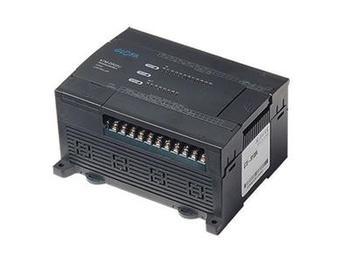 Siemens PLC is also widely used in China and has applications in fields such as metallurgy, chemical engineering and printing production lines. And in daily use, the communication method of Siemens PLC mainly has five major communication methods: RS485 serial port communication, PPI communication, MPI communication, PROFIBUS-DP communication, Ethernet communication 1, RS485 serial port communication:
Siemens PLC is also widely used in China and has applications in fields such as metallurgy, chemical engineering and printing production lines. And in daily use, the communication method of Siemens PLC mainly has five major communication methods: RS485 serial port communication, PPI communication, MPI communication, PROFIBUS-DP communication, Ethernet communication 1, RS485 serial port communication: Most of the third-party equipment support, Siemens S7PLC can control the serial port communication by selecting the free port communication mode. The simplest case is to send information only to a printer or a third-party device such as a frequency converter using a send command (XMT). In any case, it must be programmed by S7PLC. When the free port mode is selected, the user can control the operation of the communication port by sending an instruction (XMT), receiving an instruction (RCV), sending an interrupt, and receiving an interrupt.
2. PPI communication:
The PPI protocol is the most basic communication method of the S7-200 CPU. Communication can be achieved through its own port (PORT0 or PORT1). It is the default communication mode of the S7-200 CPU. PPI is a master-slave protocol communication, master-slave in a token ring network. In the CPU user network read and write instructions can be, that is, network read and write instructions are running on the PPI protocol. Therefore, the PPI can only write the program on the main station side, and the slave network read/write instructions have no meaning.
3, MPI communication:
MPI communication is a relatively simple communication method. The rate of MPI network communication is 19.2Kbit/s~12Mbit/s. MPI network supports up to 32 nodes, and the maximum communication distance is 50M. The communication distance is far, and the communication distance can also be extended by the repeater, but the repeater also occupies the node. MPI network nodes can usually be connected to S7-200, human-computer interface, programming equipment, intelligent ET200S and RS485 repeater and other network components.
4, PROFIBUS-DP communication:
The PROFIBUS-DP fieldbus is an open fieldbus system that complies with European and international standards. The structure of PROFIBUS-DP communication is very simple, the transmission speed is high and stable, and it is very suitable for the communication between the PLC and distributed I/O devices in the field.
5. Ethernet Communication The core idea of ​​Ethernet is to use a shared public transmission channel. This idea was first introduced in 1968 from the University of Haquar. In 1972, Metcalfe and David Boggs (both well-known network experts) set up a network that connected different ALTO computers together with an EARS laser printer.
Solar Pump can be applied to daily use (Groundwater) .Agricultural irrigation,foersty ieeigation,desert control,pasture animal husbandry,water supplier for islands,waste water treatment engineering and so on ,solar techsolar pumping system is depends on energy storing devices,and stors water instead of electricity.It improve the device,and at the same time it lowers the construction and maintenance cost if the system dramatically in recentyears , with the promotion of the utilization of new energy resouces,solar pumping system are widely used in municial engineering , city centre squares, parks ,turist sites,resorts and hotels ,the landscapes and fountain system in the residen tial areas.Advantages of solar photovoltaic water pump system
Fully automatic operation without manual duty.Suitable pump types are wide, such as three - phase, single - phase, direct - current pump.The input voltage range is wide, and a variety of photovoltaic modules are available.Modular design for easy maintenance.Use imported components, safe and reliable.Remote control.
Solar Pump
Solar Pump,Solar Water Pump,Solar Energy Pump,Recycle Solar Pump
ZHEJIANG FIZZ NEW ENERGY CO.,LTD , https://www.ywfizz.com